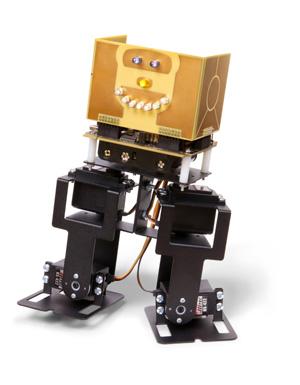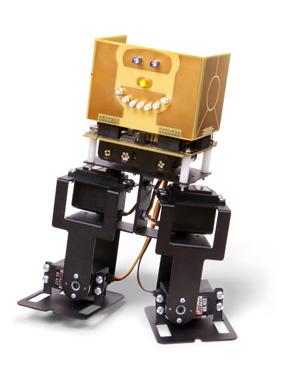Freescale's Wireless Robot Teaches Sensor Programming
May 8, 2012

Freescale Semiconductor's two-legged robot (FSLBOT) and a controller board lets engineers, students, and even hobbyists experiment with the robot's four servos and many sensors. Under software control, the robot will move and respond to touch, motion, vibration, tilt, and other external stimuli, depending on the sensors attached to it.
The four servos let the robot tilt over a bit on one foot and then rotate on that leg. Then when the robot moves back to the vertical position, software repeats the process on the other leg. Thus, the robot "walks" across a surface. Four AA batteries underneath the TWR-MECH controller board provide power, and the board's 32-bit MCF52259 ColdFire MCU handles the sensor inputs and servo-control PWM outputs.

Users can add four more servos if they want to position sensors, actuate a home-made grabber, or do something else. The TWR-MECH board will work in a Freescale Tower "stack," and its position on the robot lets you add other Tower-compatible boards above it. Add-on boards provide analog-to-digital converters, displays, keyboards, Ethernet, wireless communications, and so on.
A robot costs $199 and comes with a dialect of BASIC provided by CPUStick. Before you say, "Good grief, not BASIC," let me explain. Programmers use a PC as a terminal to write code that uses the StickOS editor, compiler, debugger, and memory "flasher" already installed in the robot. I have a robot so I can put it through some tests and then report on my experiences in another Mechatronics Zone blog entry. Of course, if you don't like BASIC, you can use Freescale's CodeWarrior tools to program the MCU in C/C++.
About the Author(s)
You May Also Like



